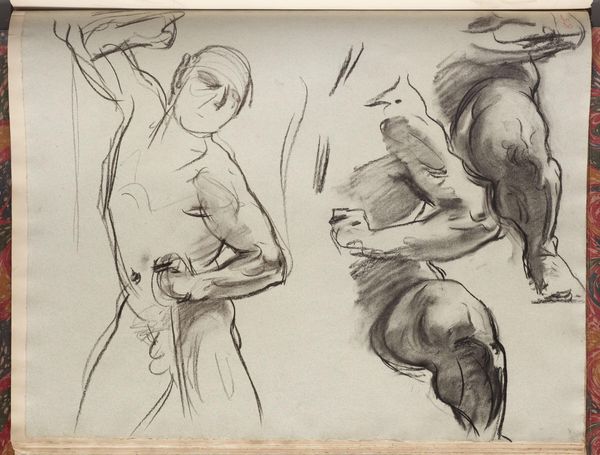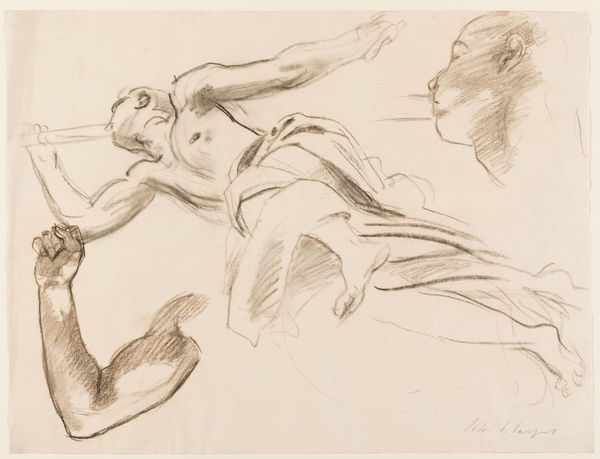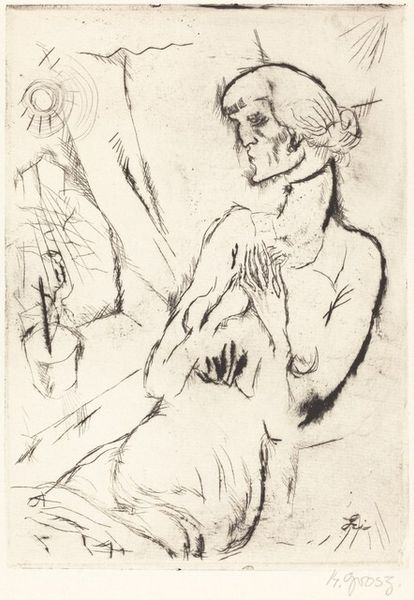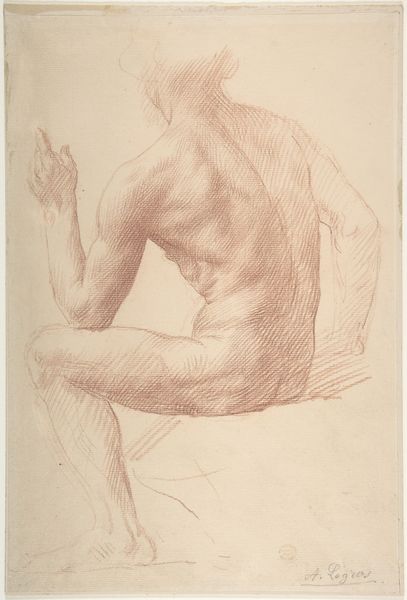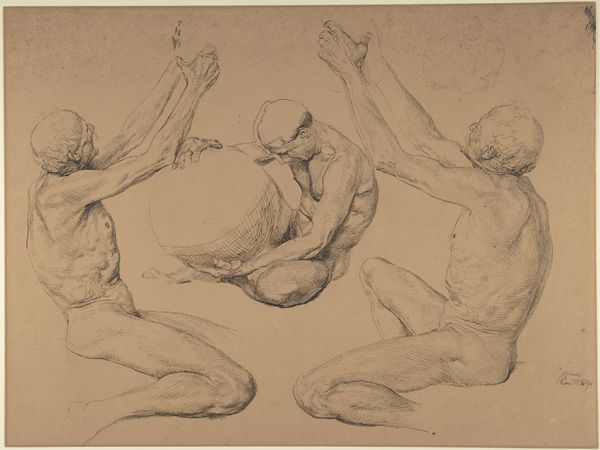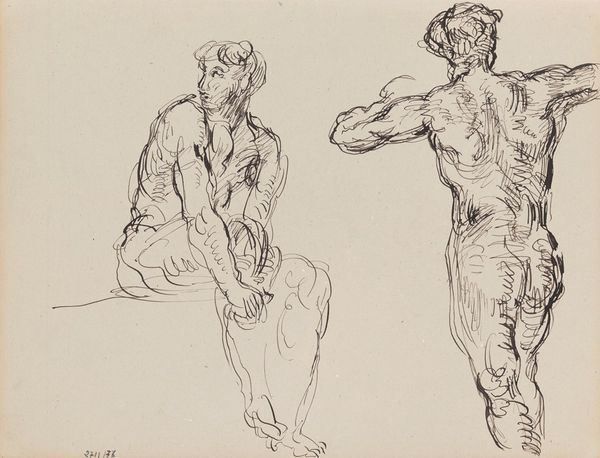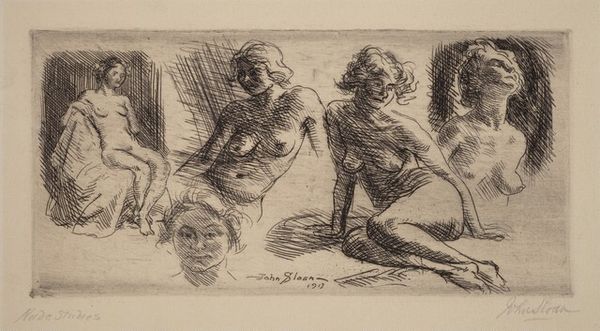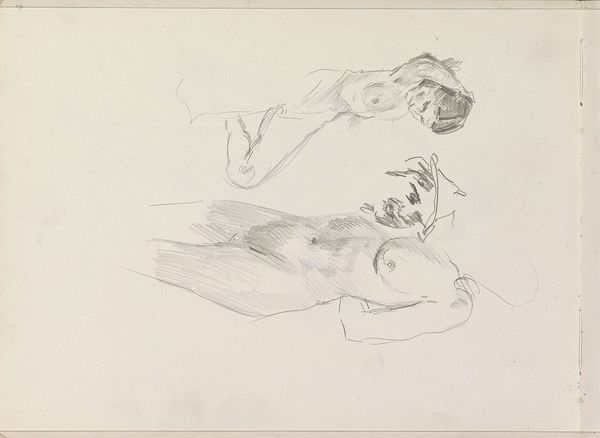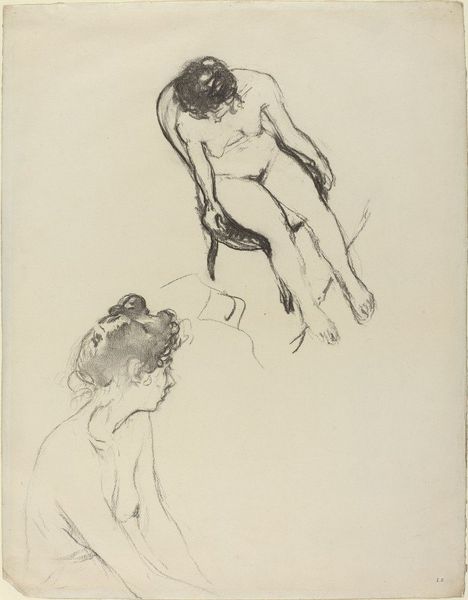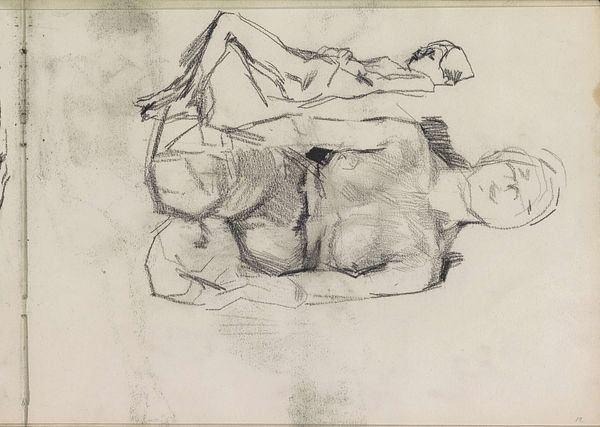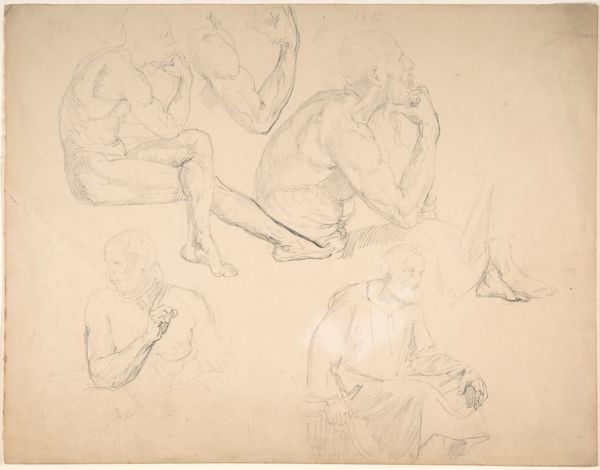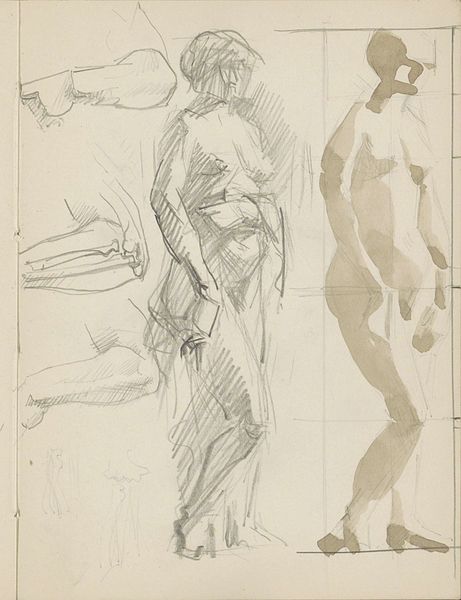
drawing, pencil
#
portrait
#
drawing
#
amateur sketch
#
toned paper
#
light pencil work
#
pencil sketch
#
incomplete sketchy
#
figuration
#
pencil drawing
#
ink drawing experimentation
#
pen-ink sketch
#
pencil
#
portrait drawing
#
pencil work
#
academic-art
Dimensions: height 240 mm, width 315 mm
Copyright: Rijks Museum: Open Domain
Curator: Theodor Grosse's "Studies van een zittende, tekenende jongen," created sometime between 1839 and 1891, is a fascinating drawing from the Rijksmuseum’s collection. Editor: My first impression is one of quiet observation. There’s a vulnerability in the subjects, these young men captured mid-thought, mid-creation. I feel an immediate sense of introspection. Curator: Indeed. Grosse’s exploration of form here is compelling. The light pencil work and the toned paper create a delicate balance. The variations in line weight skillfully define the contours and volume. It is almost like he's using the pencil to sculpt light on paper. Editor: And considering the time, one wonders about access and representation. Who were these young men? Were they afforded the same opportunities, the same visibility, as their wealthier counterparts? It is a glimpse into a classroom or studio—who gets to create, and whose stories are deemed worthy of representation in that era? The varying levels of finish suggests the ephemeral nature of art education and questions the economic structure of the artist. Curator: That is a vital reading, considering social stratification. However, also consider the formal experimentation—multiple studies on a single sheet, incomplete figures suggesting movement. He uses a classic academic approach and yet we see glimpses of an inner, expressive sensibility. Editor: I agree that the dynamism is crucial. But acknowledging its roots within the academic tradition is equally important. Who had the privilege of this training? We need to remember the selective nature of artistic patronage. The incomplete nature gives it the feeling of sketches more than fine art—it gives off student artwork vibes. Curator: Grosse gives us insight to an individual moment. Editor: Perhaps; but as a social record, it’s equally powerful in the larger, messy history of human development, art production and wealth in general. It's left me contemplative.
Comments
No comments
Be the first to comment and join the conversation on the ultimate creative platform.
